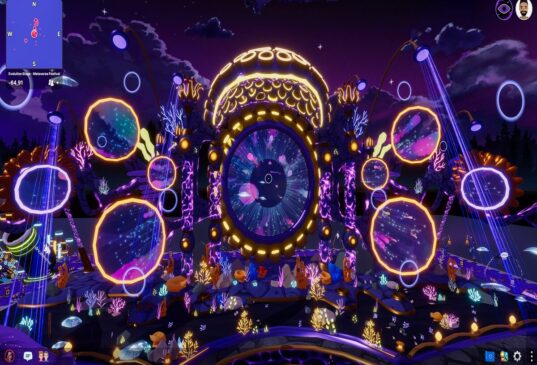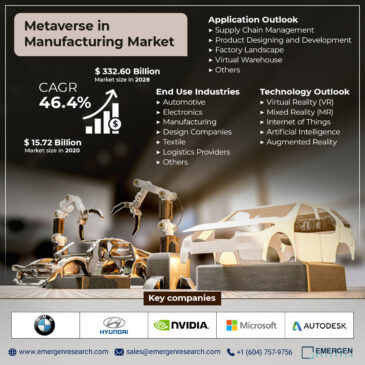![]()
Although it was born as a science fiction idea, the first signs of the metaverse became a reality a long time ago. The metaverse not only represents virtual reality, augmented reality, extended reality or cyberspace, it represents them all at once, it is everything in one.
What is the metaverse? Definition
Rather, it is discussed what the metaverse could be, what it is not, what it should or needs to be, and what is part of it. Although big executives from custom software development company and technology companies, such as Mark Zuckerberg (Facebook), Satya Nadella (Microsoft) and Jen-Hsun Huang (Nvidia) are investing billions in it, the metaverse is currently just a concept . However, characteristics can be defined that distinguish it from the Internet, software development services and technologies such as augmented reality , extended reality and virtual reality. Mark Zuckerberg calls it the “embodied internet” , where users not only look at screens, but are inside them.
Metaverse Features
Today the following properties and characteristics of the metaverse can already be defined :
- 3D spaces rendered in real time, unrestricted and persistent in time in which users move freely in their avatar form.
- 3D spaces in which users explore, design, play, work, interact and do business without being in the same physical room.
- Users can create virtual spaces between devices and systems and make them accessible to other users.
- Mixed reality and extended reality technologies are used that allow interactions between digital and real spaces. Some of these custom software development services are, for example, virtual reality glasses, digital assistants, intelligent/voice user interfaces (VUI), neural chips, machine learning , artificial intelligence and neural networks .
- Compatible virtual and real currencies form an integrated economy for digital and physical spaces.
- The combination of virtual and physical spaces requires compatible technical standards, protocols, interoperability, digital ownership, Blockchain technologies and unified legislations.
Metaverse: where does this idea come from?
Ray Bradbury already described what wireless headphones and portable media players amount to in his classic “Fahrenheit 451” (1953). Digital assistants like Alexa and artificial intelligence already appeared in science fiction novels such as “2001 – A Space Odyssey” (1968). Tablets, smartphones, video calls, robots: the world of the 21st century is full of technologies that were previously only “chimeras” and fictions.
The same goes for the metaverse, the term first appeared in Neal Stephenson’s novel “Snow Crash” in 1992, but which has existed as a concept for much longer. The fusion and interaction of reality with virtual 3D spaces can be found in the cyberpunk genre of the 1980s, as well as in modern cinematic interpretations such as “The Matrix” (1999) and “Ready Player One” (2018). But, today, the metaverse is not fiction. Practical examples of this have long existed.
Example 1: Second Life
Since 2003, the online 3D infrastructure called Second Life allows users to move with their avatars in virtual spaces created by themselves, establish contacts, do business, play games or communicate. SL is not an online game in the true sense of the word, as there is no “goal” nor “can win or lose”. More than 17 years old, Second Life is considered one of the first versions of a rudimentary and almost implemented metaverse.
Example 2: MMO – Massively Multiplayer Online
Massively multiplayer online (MMO) games such as Fortnite, World of Warcraft (WoW), Minecraft, Roblox or Final Fantasy XIV are very popular. MMOs are time- persistent virtual worlds used by thousands of players simultaneously. MMOs can be divided into different categories or genres.
In contrast, in sandbox MMO games, such as Minecraft, Roblox, and Animal Crossings, players can design virtual spaces relatively freely and interact with other players. Since MMOs are currently limited thematically and barely offer overlaps with physical spaces, in these games we have not yet entered the metaverse, the border to it remains intact. This could change if several MMOs are connected on the same network and players could move freely with their avatars between the different spaces of each MMO.
The metaverse and its importance for electronic commerce
The metaverse not only offers users new opportunities to explore virtual spaces. It also opens up new e-commerce options for businesses. The COVID-19 crisis has demonstrated the flexibility with which an interconnected world can react to the restriction of contacts when social and business life moves to the metaverse. The metaverse gives rise to new marketing strategies, especially when it comes to real-time analysis of user data, online purchases and cryptocurrencies such as Bitcoin. Among the new marketing strategies are the opportunities to expand customer groups, give visibility to one’s own brand and interact with customers directly and on a global level.
If social digital spaces are no longer limited to applications, web pages and the interfaces of smartphones and laptops, advertising and marketing campaigns will go far beyond current targeted ads, keyword research , brand building and online marketing. social networks . An example of this is concerts and events that have been moved to stadiums or other virtual spaces due to lockdowns. Other examples are the digital counterparts of real places and products that can be visited over the Internet. In this way, the user can try on clothes in virtual fitting rooms or view products virtually, such as second-hand cars.
The Facebook metaverse: the metaverse as a vision of the future
Mark Zuckerberg, CEO of Facebook, is one of the biggest proponents and investors of the metaverse. In 2021, he announced his intention to transform Facebook into a metaverse company in the coming years. Facebook recently awarded $50 million through the XR Research and Programs Fund in funding to boost research and development programs in the metaverse over the next two years. This includes funding for studies into the potential of augmented reality wearables, such as the smart glasses that Facebook Reality Labs plans to create. According to Facebook, the metaverse is the new “computing platform.” For this reason, the Internet giant invests a few billion dollars annually in the development of basic supporting technologies .
Currently, Facebook’s largest project for the metaverse is called Horizon Workrooms and focuses on the “Metaverse for Work.” Currently available as a beta in the Oculus app, Horizon Workrooms supports new hybrid work models . Horizon users can actively collaborate with co-workers elsewhere with their avatar shapes in virtual conference rooms. Distance learning programs, complementary training opportunities or client consulting must also be taken into account. With about 3 billion monthly active users, Facebook is the largest social media company in the world. The “Metaverse for Work” is just a first step towards a world where users interact, create, play and shop in the metaverse without the need to share a physical location.
Author Bio:
Glad you are reading this. I’m Yokesh Shankar, the COO at Sparkout Tech, one of the primary founders of a highly creative space. I’m more associated with digital transformation solutions for global issues. Nurturing in Fintech, Supply chain, AR VR solutions, Real estate, and other sectors vitalizing new-age technology, I see this space as a forum to share and seek information. Writing and reading give me more clarity about what I need.


